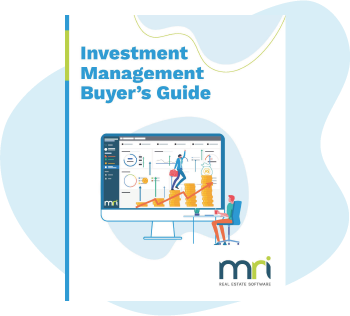Investing in mixed use property: Benefits and investment insights
Mixed use developments are reshaping urban landscapes, with global projections showing over 20% growth in the next decade. These versatile properties combine residential, commercial, and retail spaces, meeting modern tenant demands for convenience and sustainability. For landlords, mixed use investment property represents a unique opportunity to diversify income and build vibrant, community-oriented spaces.
In this guide, we’ll explore what mixed use properties are, why they’re a smart investment, and the key factors to consider before diving in. We’ll also cover how tools like MRI Software can simplify managing these properties. Whether you’re new to investing in multi-purpose property or expanding your portfolio, this guide will provide valuable insights.
What is mixed use property?
Mixed use properties are developments that combine two or more types of real estate, residential, commercial, retail, or industrial, into a single location. These spaces are designed to serve multiple functions, like apartments situated above shops or offices. Understanding what is a mixed use property is essential for investors who want to tap into the growing demand for multi-functional communities.
There are two main types of mixed use developments: vertical and horizontal. Vertical properties stack different uses within one building, such as residential units above ground-floor retail. Horizontal developments, on the other hand, integrate multiple single-use buildings within a walkable area to create cohesive neighborhoods.
Types of mixed use properties
- Main Street properties: These traditional multi-use developments feature commercial spaces on the ground floor and residential units above. Common in city centers, they offer tenants easy access to shops, dining, and entertainment.
- Live/work spaces: These properties combine residential apartments with workspaces, catering to professionals and entrepreneurs. Tenants benefit from reduced commute times and the ability to live and work in one location.
- Mixed-use hotels: These developments blend hotels with amenities like gyms, retail stores, and restaurants. By appealing to both travelers and locals, they generate diverse revenue streams for investors.
- Walkable communities: Combining vertical and horizontal elements, these neighborhoods allow residents to meet all their needs within walking distance. They are increasingly popular for their sustainability and convenience.
Characteristics that differentiate mixed-use properties from single-use properties
With their ability to diversify income and attract a wide range of tenants, knowing what are mixed use properties and their features is essential for investing. Single-use properties, such as standalone office buildings, rely on one tenant type, increasing vulnerability during economic shifts. In contrast, mixed use investment property spreads risk across residential, retail, and office tenants, ensuring stable cash flow.
These developments also emphasize sustainability and community integration. Features like pedestrian-friendly designs and on-site amenities appeal to tenants seeking convenience and modern living. By addressing multiple tenant needs, hybrid use properties consistently outperform single-use properties in terms of value and demand.
The benefits of investing in mixed use properties
Investing in mixed use property provides diverse advantages, from financial stability to fostering tenant satisfaction. By combining residential, commercial, and retail spaces, these developments create multiple revenue streams and reduce reliance on a single tenant type. This approach is also ideal for building a diversified real estate investment portfolio, offering a balanced mix of asset classes and tenant markets.
Diversification of income streams
Mixed use investment property generates income from diverse tenant types, such as retail businesses, residential leases, and office spaces. This reduces reliance on a single revenue source, protecting against market fluctuations. For example, if retail demand decreases, residential leases continue providing stable income.
This strategy also allows properties to adapt to varying economic conditions. During an economic boom, retail spaces thrive, while residential tenants provide stability during recessions. By balancing tenant types, mixed function investment property ensures consistent and predictable returns.
Increased property value
Mixed use developments tend to appreciate faster than single-use buildings due to their versatility and high demand. The combination of residential and commercial uses increases tenant appeal and market competitiveness. For investors, this translates to higher resale values and long-term profitability.
Consider a mixed purpose property with on-site amenities like gyms, cafes, and retail stores. These features not only attract premium tenants but also reduce vacancy rates. Over time, such demand solidifies the property’s market value, making it a reliable investment choice.
Attracting a broader tenant base
Combined-use properties appeal to a diverse range of tenants, from families and young professionals to small business owners. For tenants, the ability to live, work, and shop in one location is a significant advantage. This versatility ensures steady demand and reduces the time it takes to fill vacancies.
By investing in mixed use commercial property, landlords can tap into multiple tenant markets simultaneously. For example, residential tenants might include young professionals, while retail tenants range from local boutiques to established brands. This broad tenant base provides landlords with both stability and flexibility.
Enhanced community engagement
Multi-purpose developments create dynamic spaces where tenants and businesses can thrive together. These properties foster social interactions, strengthening connections within the community. As a result, tenants often feel a deeper sense of belonging, leading to higher retention rates.
Imagine a tenant grabbing breakfast at the downstairs café before heading to a coworking space on-site. These everyday conveniences enhance tenant satisfaction and improve the property’s overall appeal. This combination of functionality and community focus makes mixed use properties a win-win for landlords and tenants alike.
Investing in mixed use commercial property
Mixed use commercial properties are an excellent option for investors aiming to diversify their portfolios. These developments blend residential and commercial spaces, creating balanced risk and multiple income streams. Whether it’s a high-rise with apartments above shops or a walkable community with retail and office spaces, the potential for strong returns is undeniable.
Successful investments in mixed use property require careful planning and attention to detail. Factors like zoning regulations, market demand, and tenant needs must align to maximize profitability. With a well-thought-out approach, these properties can serve as a reliable foundation for your real estate investment strategy.
Considerations from investors
When investing in mixed use properties, evaluating factors like location, market trends, and management needs is crucial. These considerations will help you make informed decisions and achieve long-term success.
Location and demand
Location is critical to the success of any blended use development. Urban areas with high foot traffic and public transport access are particularly attractive for tenants. Neighborhoods experiencing population growth or housing shortages offer promising opportunities for hybrid use properties.
For example, a mixed use investment property in a growing city center could achieve higher occupancy rates and rental income. Proximity to amenities like schools, offices, and shops further boosts tenant demand. Choosing the right location ensures consistent profitability and long-term stability.
Market trends and economic factors
Keeping an eye on market trends is essential for successful mixed use investments. For instance, the rising demand for walkable communities reflects tenant preferences for sustainability and accessibility. Aligning with these trends positions your property to attract high-quality tenants.
Economic factors, such as employment rates and interest rates, also influence property performance. By staying informed, you can anticipate challenges and adapt your investment strategy. A well-researched approach ensures resilience in changing market conditions.
Property management
Managing mixed use properties requires a tailored approach due to their diverse tenant needs. Residential tenants may prioritize quiet living spaces, while commercial tenants require well-maintained storefronts. Balancing these expectations is key to maintaining tenant satisfaction.
Using real estate investment software can simplify operations like rent collection and lease tracking. These tools streamline property management, saving landlords time and resources. By adopting efficient management practices, you can focus on growing your portfolio.
Simplify mixed-use property management with MRI Software
At MRI Software, we understand the complexities of managing mixed use properties and offer tools specifically designed to address these challenges. Our commercial real estate strategy solutions automate processes like rent collection, streamline operations, and improve tenant communication. These features enable landlords to efficiently manage diverse tenant needs across residential, commercial, and retail spaces.
Investment Management Buyer's Guide
Reduce risk and attract investors with real estate investment management technology

AI In Corporate Real Estate Survey Report 2025
In 2025, artificial intelligence is no longer a distant promise. It’s here, reshaping how we plan, manage, and optimize the spaces where business happens. From automating lease administration to forecasting occupancy and unlocking strategic insights…

